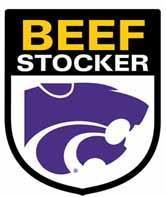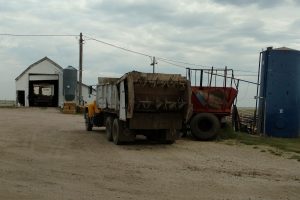by Dale Blasi, Extension Livestock Specialist, and T.J. Spore
Many producers have used limit- or programmed-feeding in the past with success, especially during periods of drought when forage is not adequate. In a nutshell, limit- or program-feeding refers to the practice of limiting calves to two-thirds to three-quarters of the dry matter that they can normally consume. This feeding strategy varies greatly with traditional management where calves generally have free-choice access to forage. Traditionally, limit-fed diets have consisted of 80 to 85% whole shelled corn and the remaining balance as a protein supplement. The total amount of the ration delivered is increased every two weeks or so to account for increased body weight gain based upon the desired level of gain.


